The Ultimate Guide to Ecommerce Returns
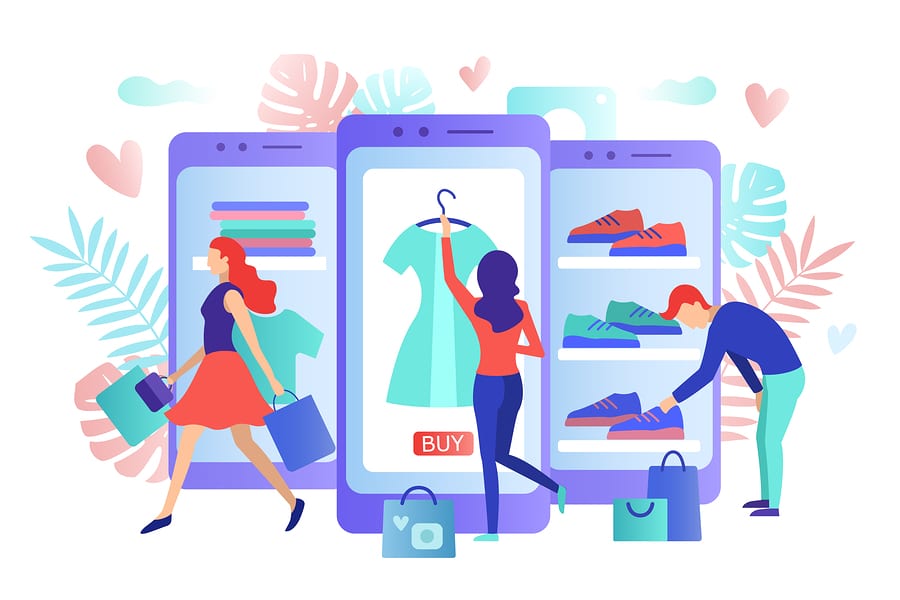
If you run an online store, you’ve got plenty on your plate. From marketing, to inventory management, fulfillment and, yes, ecommerce returns. Returns are simply an unavoidable aspect of operating any online store. When customers buy, some customers will make a return. The difference that can set your store apart from others – especially in the mind of your customers – is the efficiency by which you manage ecommerce returns and in how you craft your online product returns policy.
As we head into the latter portion of 2019, and as the holiday shopping rush begins to wind down, ecommerce is priming up for the returns season. Come the day after Christmas, the reverse logistics rush will commence. According to the National Retail Federation, ecommerce sales will increase by an estimated 3.8 to 4.4% this season, with Internet Retailer projecting a stronger 15.5% increase in sales for the month of December.
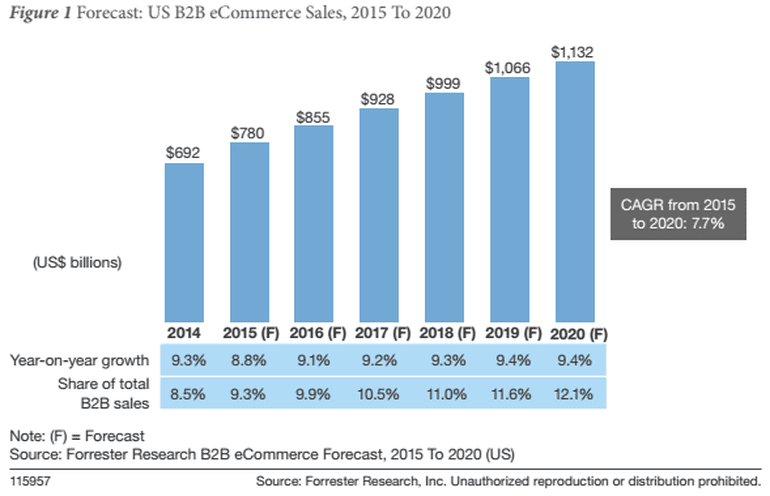 Think tanks like Forrester have been spot on with their previous projections of ecommerce growth. The chart above provides a good snapshot of this projected growth. Between 2014 and the end of 2019, ecommerce will have grown from $692 billion to $999 billion, representing an impressive 9.3% growth rate over a four-year span.
Think tanks like Forrester have been spot on with their previous projections of ecommerce growth. The chart above provides a good snapshot of this projected growth. Between 2014 and the end of 2019, ecommerce will have grown from $692 billion to $999 billion, representing an impressive 9.3% growth rate over a four-year span.
In order to keep your store at the top of your customers’ lists, and to preserve loyalty and retention, you have to also be mindful of your ecommerce returns policy. We’ve got you covered right here. Get the facts on everything that you need to know with this end-of-the-year special ReadyReturns edition: The Ultimate Guide to Ecommerce Returns.
2019 Ecommerce Returns Statstics
The best way to master your returns policy is by arming yourself with these 2018 ecommerce returns statistics:
- Over 63% of consumers read the online product returns policy before making a purchase.
- 81% of consumers want a convenient returns policy that is hassle-free with no return shipping cost.
- About one-third of all products ordered online are returned by consumers.
- When free returns are offered, sales can increase by as much as 357%.
- When return shipping fees are charged, 81% of consumers are less likely to make a future purchase.
- Zappos gets 75% improved customer loyalty, repeat buyers from free returns, even though they charge more for their products.
Reasons for Ecommerce Returns
Instead of second-guessing why customers are placing returns, gaining insight into the actual reason can help you craft a policy that works to retain them and to help improve your bottom line. Again we turn to think tank Forrester, and a study they conducted that dates back to 2008. Oddly enough, many of these findings are as accurate as ever today, 10 years later.
The findings revealed that:
- 23% of returns are due to the wrong item being shipped.
- 22% of returns are due to the difference in product appearance.
- 20% of returns are due to a damaged item being received.
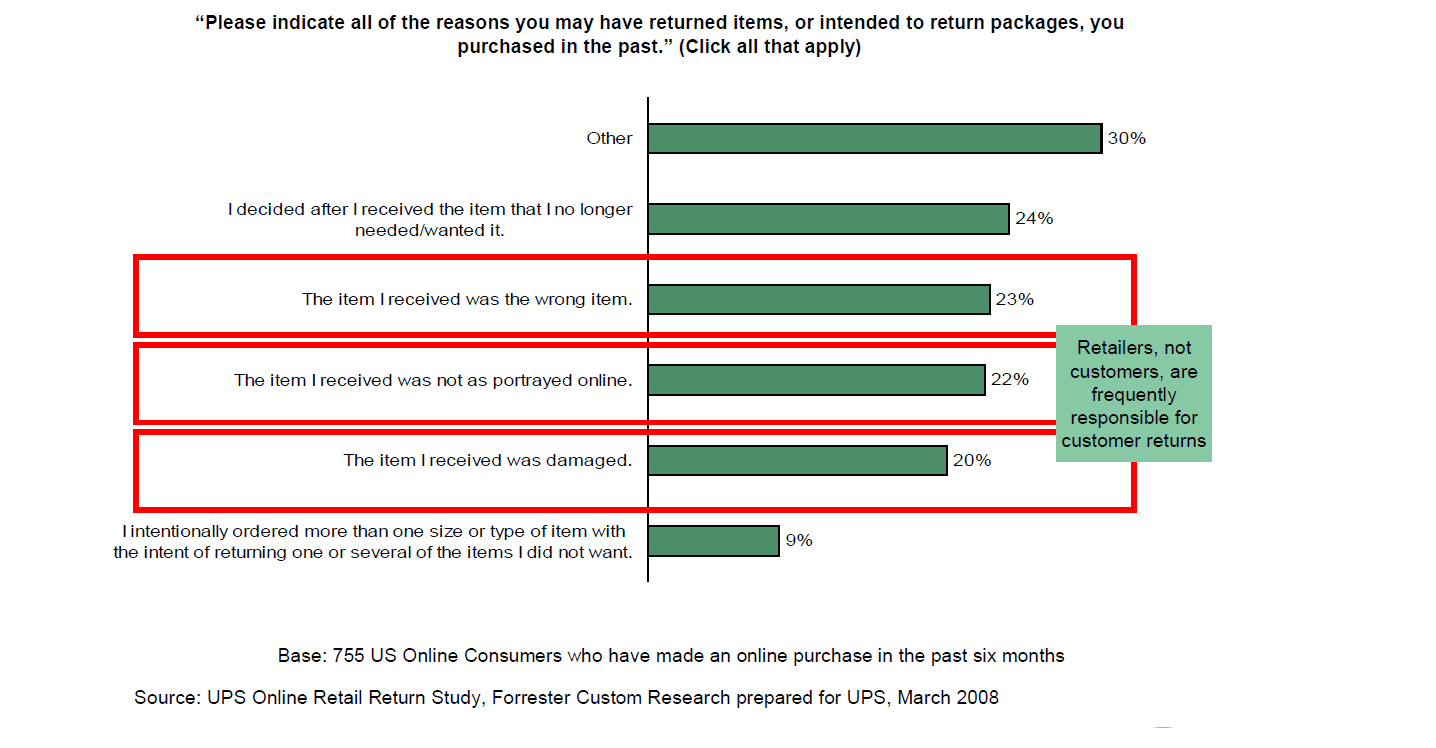 In essence, the findings from this study revealed that most returns (about 65% of them) are actually not the fault of the customer. Rather, the blame lies squarely on you, the retailer, even if the result was unintentional. Sometimes the wrong product is mistakenly shipped. Other times, the online pictures and product description were not satisfactory to the consumer. And in 20% of all cases, a product is received that’s either damaged or missing parts or an electronics product is Dead on Arrival (DOA). By these metrics, we can confirm that in just 35% of all cases, the reason for the return is purely that of the consumer.
In essence, the findings from this study revealed that most returns (about 65% of them) are actually not the fault of the customer. Rather, the blame lies squarely on you, the retailer, even if the result was unintentional. Sometimes the wrong product is mistakenly shipped. Other times, the online pictures and product description were not satisfactory to the consumer. And in 20% of all cases, a product is received that’s either damaged or missing parts or an electronics product is Dead on Arrival (DOA). By these metrics, we can confirm that in just 35% of all cases, the reason for the return is purely that of the consumer.
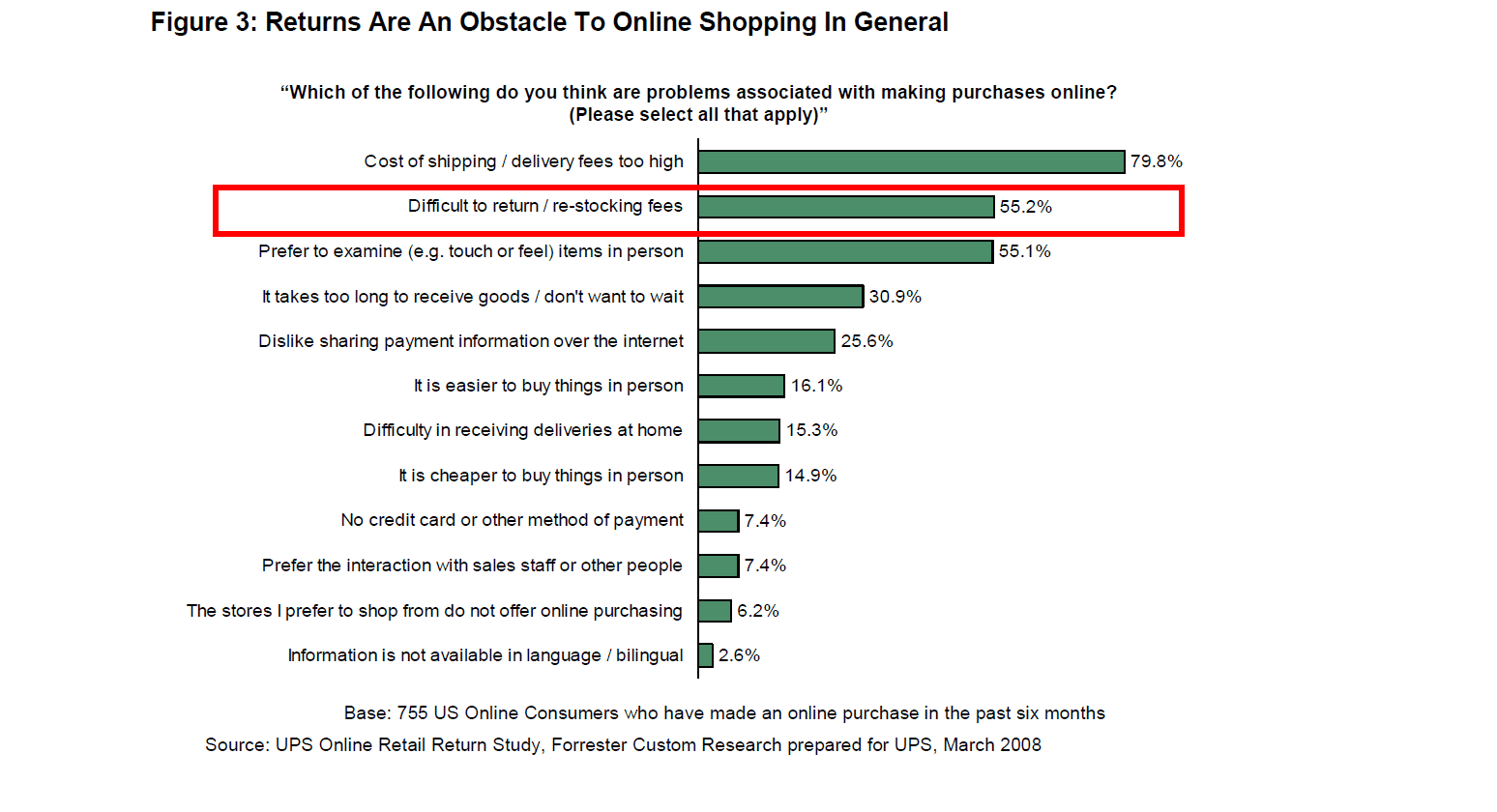 Another way that returns can impact your bottom line is via the failure to offer easy returns or free returns shipping. These two aspects, coupled with not offering a no-questions-asked returns policy, can kill your bottom line. As you can see from the Forrester chart above, 55% of shoppers view difficult returns, restocking fees and return shipping fees as an “obstacle to online shopping in general.”
Another way that returns can impact your bottom line is via the failure to offer easy returns or free returns shipping. These two aspects, coupled with not offering a no-questions-asked returns policy, can kill your bottom line. As you can see from the Forrester chart above, 55% of shoppers view difficult returns, restocking fees and return shipping fees as an “obstacle to online shopping in general.”
UPS provides more up-to-date numbers (below) on how users want to return a package they bought online in their 2016 Pulse of the Online Shopper report, finding that 68% of online shoppers prefer to ship a product back to a retailer, and 40% of in-store shoppers prefer to send returns via shipment as well. Topping the list of complaints shoppers have when placing a return, 50% said they didn’t want to pay return shipping fees, and 27% said they did not want to have to pay restocking fees when returning a purchase.

Your Return Policy Matters
When crafting your ecommerce returns policy, it’s helpful to know just how many consumers are taking the time to read it. Plenty of retailers are unaware of how interconnected the return policy is to the converted customer. A white paper that was created in 2014 by comScore, on behalf of UPS, called “2014 Pulse of the Online Shopper™,” reveals that your return policy influences 80% of your sales, and also that 62% of consumers will actually take the time to read it before deciding whether or not to make a purchase at your online store.
- 50% of shoppers think that returns should be easier to make online.
- 42% of shoppers are satisfied with the process of making online returns.
- 86% of shoppers want a return shipping label provider by an e-retailer.
- 68% of shoppers view free return shipping as a positive shopping experience.
- 67% of shoppers read your return policy before making a buying decision.
- 63% of shoppers are unhappy when they have to pay return shipping fees.
- 52% of shoppers want the return shipping label included in the box.
- 51% of shoppers will not make a purchase if the return shipping label is not in the box.
When designing your return policy, bear in the mind these four tips. They will enable you to offer the customer something that will help to not only convert the sale, but to also earn their repeat business and long term loyalty.
- Communication: Make sure that your return policy is clear, easy to read and well defined. Explain how it works, what can be returned, the return-by dates after purchase and any associated rules and restocking or return shipping fees.[Quick Fact: According to Forrester, 58% of shoppers desire a no-questions-asked return policy.]
- Convenience: Online shopping is trendy because it’s fast and convenient. Consumers also want it to be just as easy to send products back. Make sure you offer consumers a way to process a return from your website and print a return shipping label.[Quick Fact: According to Forrester, 47% of shoppers want an easy way to print a return shipping label.]
- Pricing: If at all possible, offer free return shipping and don’t charge restocking fees.[Quick Fact: Over 80% of consumers polled by Forrester stated that free return shipping with no restocking fees was a key element they sought with any online store.]
- Be Flexible: Be lenient with your return policy. This means offering at least 30 to 45 days for returns. Give customers the confidence they need to make the purchase from your online store, and the sale as well as their loyalty and long term retention will follow.[Quick Fact: The leading online retailers offer a 30 to 60 day return policy 45 days is the happy medium.]

Ignoring Bad Advice About Returns
Given that returns are often bemoaned by many retailers, it’s unsurprising that there exists plenty of bad advice about how to manage ecommerce returns. A few of the topics we’ve covered, and what not to do any why with your return policy, are as follows.
- Making returns hard means I will keep more sales: Actually, it’s quite the opposite. Shoppers make a purchasing decision in seconds these days. Studies find that over 60% read your return policy and 80% want easy returns. By making returns hard, you are just saying no to stronger sales. With a cart abandonment rates already at 67%, you can’t afford to say no to more than half your prospective customers. Instead, you need to convince and convert with your online return policy right from the start, so you can get the sale and appease the customer.
- A 14-day return policy is good enough: Not when shipping takes five to ten days. That leaves your customers with just four days to get the product back if it doesn’t work out. Remember, in 65% of all cases of returns, it’s not the fault of the customer. Study after study has found that lenient return policies attract more customers and improve long term retention and loyalty. Instead, offer a minimum of 30 days to return, and you’ll keep customers longer.
- Charging return shipping will equate to fewer returns: The polar opposite is true here. Charging return shipping will result in fewer customers, which in turn will mean fewer returns. This does not mean that your returns have decreased; it just means that you are losing customers or failing to attract new ones. A comScore study found that over 80% of customers want free return shipping with no restocking fees.
- No-questions-asked returns cost me too much money in the long run: This is entirely untrue. Seeing in the short term for your long term goals is always a mistake. In fact, numerous studies have found, as mentioned above, that offering hassle-free returns with no associated fees makes you more money in the long run. Several case studies have concluded that profits increase by 25%-357% or more over just six months.
How Easy Returns Improve Sales
While ecommerce returns have often been viewed as one of the downsides to online retailing, the truth is that they should be viewed as a long term, revenue-producing funnel instead. That’s because recent reports show that a lenient ecommerce return policy will actually help to improve long term sales and profits by a large margin.
“There’s been a notable change in attitudes … In years past, retailers weren’t all that receptive to it [offering lenient returns], they were thinking that by not offering, people will not return their purchases,” explained Chris Dunn, head of business development at TrueShip in a recent interview with the Wall Street Journal. “They’re starting to realize that you’re still going to return, and you’re not going to buy from that retailer again.”
Most retailers are so focused on closing the sale that they often overlook the most critical aspect that follows: The after-buying experience. What happens when a shopper has spent money at your online store and then goes to place a return, only to find out that this is a difficult and tiresome process. If returns are not fast, easy and free, the shopper will simply take their business elsewhere in the future. However, if the return is convenient, you stand to profit greatly off your shoppers in the future, and here’s why.
The big question on retailers’ mind is: Can product easy returns make you money in the long term. Let’s see what the biggest retailers in ecommerce have to say.
According to Rubin Ritter, managing director of Zalando, returns are just part of e-retailing.
“A world without returns would be nice, but it’s unrealistic. For us, the question is: can the business be profitable with returns? And we are certain that we can. And to end the discussion, I will tell you: the overall return rate for Zalando is 50%,” Ritter explained in a recent interview.
Craig Adkins, Vice President of operations at Zappos, says their return rate is 35%, but with some of their customers it can reach as much as 50%. He emphasizes that Zappos “loves these (high return) customers.”
- A CNBC article reporting on a study that followed two large online retailers over the course of 48 months, showed massive profits from offering easy returns. The results of analyzing more than 50,000 transactions found that when hassle-free returns with no return shipping cost or restocking fees were offered, customers spent more and the companies profited more. Average spending increased between $600 and $2,400 per customer over 24 months, demonstrating that the simplicity and convenience of returns encouraged repeat purchases and improved retention, benefiting the bottom line of the retailers by as much as 357%.
- A related Science Daily article reported on following two retailers as part of a controlled group case study on returns. 26,000 customers were analyzed over a six-month period that covered millions in sales. The control group that offered no-questions-asked returns generated $1.8 million in sales as compared to the group charged return shipping fees and restocking fees, which only generated $1.22 million in sales. The difference a return policy made over just six months was an impressive $580,000. “Retailers who do not consider product returns in their measure of customer value (even simply as a cost that needs to be managed) are missing out on profits they could be obtaining by understanding and allocating resources to product-returning customers. Paying attention to these customers pays off,” the authors conclude.
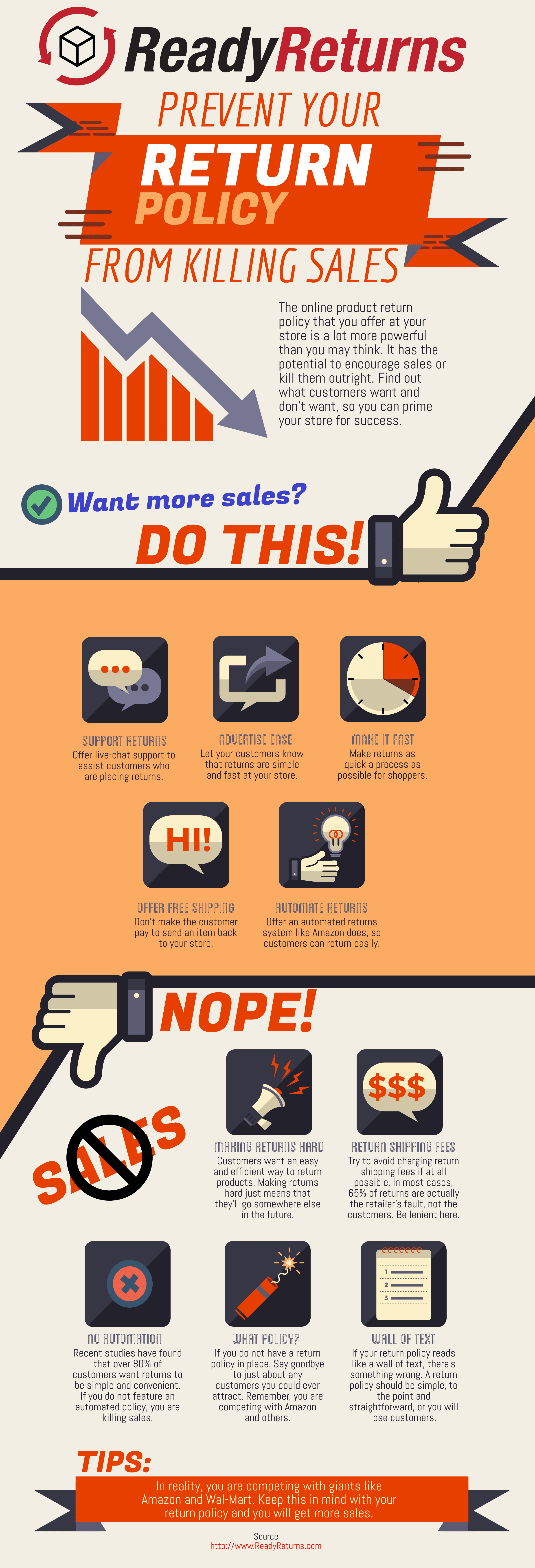
What Shoppers Want
So just what do your customers want from your ecommerce return policy, and what can you do to feasibly offer it to them while still protecting your bottom line and thin retail margins? When considering your ecommerce return policy and process, make sure you don’t overlook these veritable and recent statistics.
Shoppers’ Habits
- 88% of shoppers will take the time to read a retailer’s return policy.
- 77% of retailers provide a specified return period.
- 66% of shoppers will actually read the policy before they make a purchase.
- 40% struggle to find the return policy, which can lead to abandonment.
- 38% are dissatisfied with the clarity of the returns policy.
- 15% of consumers abandon the shopping cart if the returns policy is unclear.
What Shoppers Want
The most recent statistics shed some light on what consumers want from an online product return policy.
- 86% want a return shipping label provided by the retailer.
- 68% think free return shipping equates to a positive shopping experience.
- 63% of consumers are dissatisfied with paying for return shipping costs.
- 52% want the return shipping label included in the box.
- 51% will not make a purchase if a return label is not included in the box.
- 50% of shoppers think that returns can be easier to make online.
- 42% are satisfied with the process of making returns or exchanges.
Crafting a Great Return Policy
Getting the right return policy in place will require some time and effort. There’s your customers to think about, your bottom line, cost absorption and the reverse logistics. Such finagling requires that you approach this as a MacGyver about ecommerce returns. Here are some parting tips that can enable you to craft a winning ecommerce returns policy for your customers, one that helps your store profit and attract more conversions in the long term.
- Automate returns: A comScore study found that 36% of consumers want an automated ecommerce return process, while the vast majority do not want to make a phone call or request an RMA via email or text chat.
- Offer 60 days to return: The industry standard is 30 days, but the leading online retailers offer 60 days to return. Put your store in the company of the best by standing behind your products for at least 60 days.
- Include a label in the box: Studies show that 47% of consumers want a way to print a return label from your website, while more than 50% want a return label included in the box.
- Don’t charge fees: The vast majority of consumers do not want to pay returns shipping or restocking fees. Offering them this amenity will do wonders for retention and loyalty.
- Automate refunds: Compete with the biggest retailers by automating card refunds. This may not be possible for all retailers, but if you have the means to, make this happen.
- Reengage your shoppers: Even if shoppers make a return, they ultimately end up back at your website to process it. You can offer store credits or special, value-added propositions that encourage the shopper to buy something new at a special rate, bringing the potentially lost revenue from the return back into your profit fold.
Need even more tips? Make sure to read our related guide: #ReturnsHappen: How to Prevent Buyer’s Remorse This Holiday Season. Alsom make sure you take a look at the infographic we’ve included below. It will bring you up to speed on the most current 2019 ecommerce returns statistics.

Share On:








